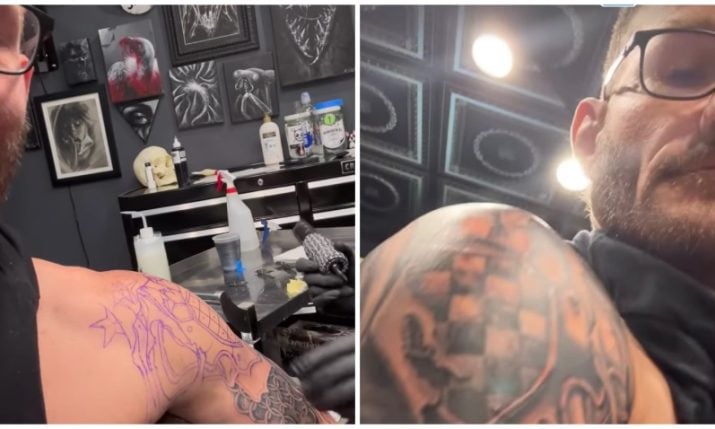Traditional Croatian Tattoos: Meet the tattoo artist keeping tradition alive
- by croatiaweek
- in Entertainment
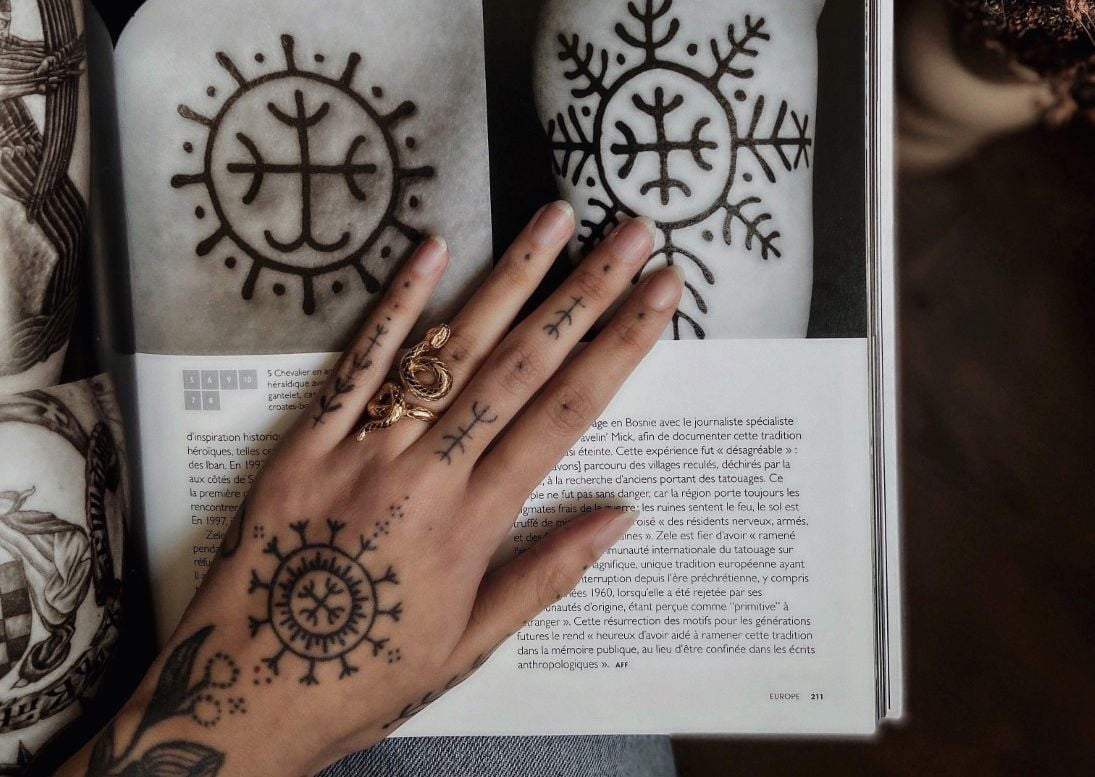
(Private album)
Tattooing of the hands was a widespread tradition among Catholic Croatian women in Bosnia and Herzegovina during the Ottoman rule centuries ago.
This tradition originates from the places once occupied by the Turks and its purpose was to prevent young, Catholic women being kidnapped and converted to Islam. Tattooing symbols on the hand however dates even further back than that period.
The custom was mostly revived during the reign and fear of the Ottoman Empire, when Christian symbols were used for protection.
Traditional symbols included crosses, sometimes tattooed around the women’s wrist so that they looked like bracelets. The cross also has its variations in the form of a small pine tree. The kolo (circle), a motif taken from the kolo dancing in the villages, were also tattooed, which symbolised togetherness.
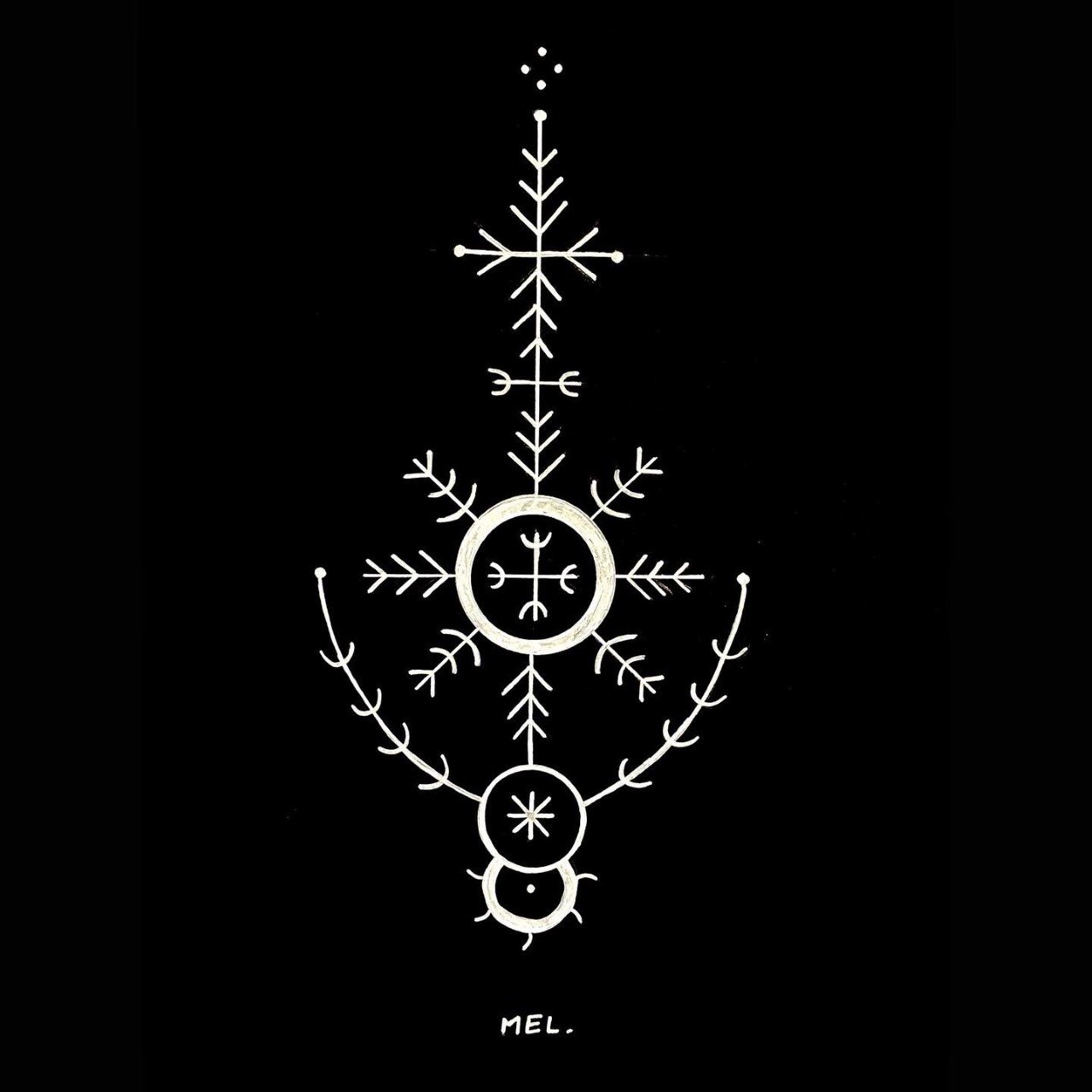
(Private album)
According to historians, youngsters, usually girls, were being tattooed between the age of 12 and 16. Some were tattooed even younger.
The traditional ceremony of tattooing was called “sicanje“ or “bocanje“ and was usually done by older women using a needle and a mixture of charcoal or gunpowder and honey or milk.
The custom was practiced in central and southern Bosnia, around the town of Jajce, as well as Rama, Uskoplje, Kupres and Kraljeva Sutjeska, and in some places in the Dalmatian hinterland in Croatia, between Sinj and Šibenik and in the Dubrovnik-Neretva County.
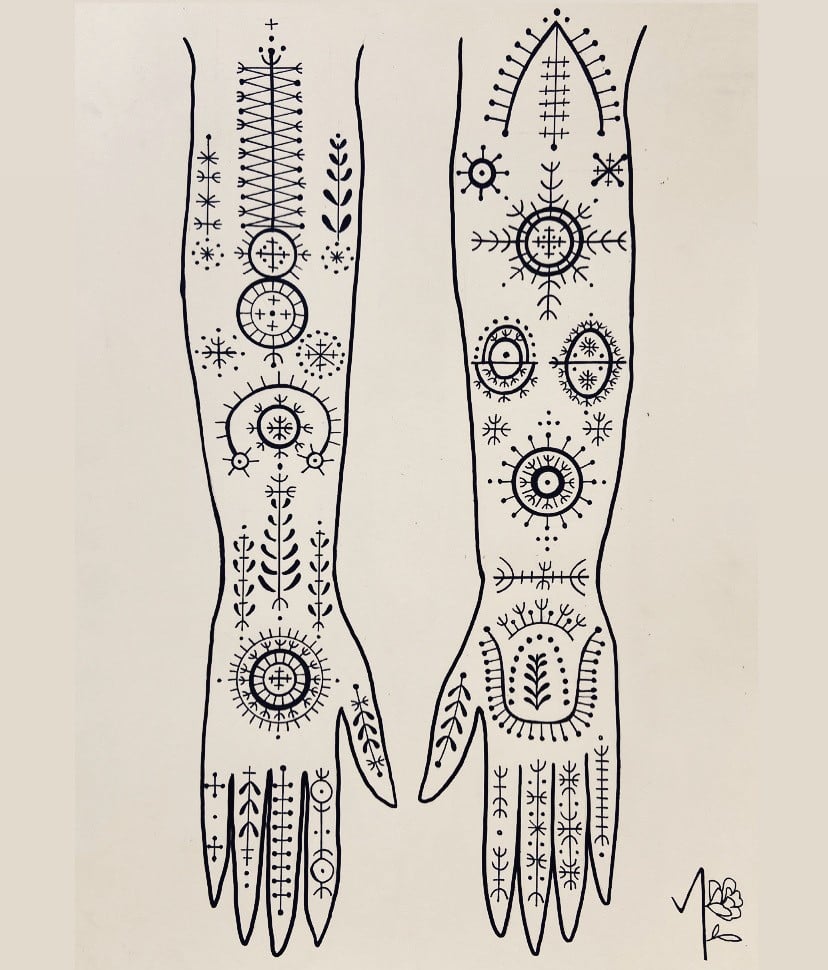
(Private album)
Today, the traditional tattoos are becoming popular again and one person who is keeping the traditional alive the traditional way is Melissa, a 29-year-old tattoo artist in Paris.
Born to a Bosnian father from Croatia and a French mother, whom he met whilst she was holidaying in Dubrovnik, Melissa grew up in the south of France.
After studying applied arts and architecture for 7 years and working as a freelance architect for 4 years in Canada and Paris, she decided to change direction and become a tattoo artist.
Passionate about ethnic tattoos, Melissa is keeping the tradition alive the old way without using a machine but only needles.
We caught up with her to learn more about her back story and how she is keeping the tradition alive.
Were you closely connected to your culture growing up?
To be honest I don’t speak Croatian (only some small-talk and expressions) and I wanted to find a way to express myself and be more connected with my dad’s culture.
When I started tattooing I began to do more and more research about traditional tattoos from Croatia and Bosnia. I absolutely wanted to integrate this heritage in my art and explore it. I am super proud of my roots and it’s an honour for me to share it with people. The balkan community in France is pretty small and French people are really curious about this culture. I spent my summer holidays in Croatia with my family when I was younger but I didn’t go there for a long time.
Travelling is one of my numerous passions and the last few years I wanted to discover new countries and new cultures through some solo trips … But visiting the Balkans during a summer road trip is in my dream plan. Maybe I could integrate the tattoo in this adventure now that I am more free in my activity than when I was an architect.
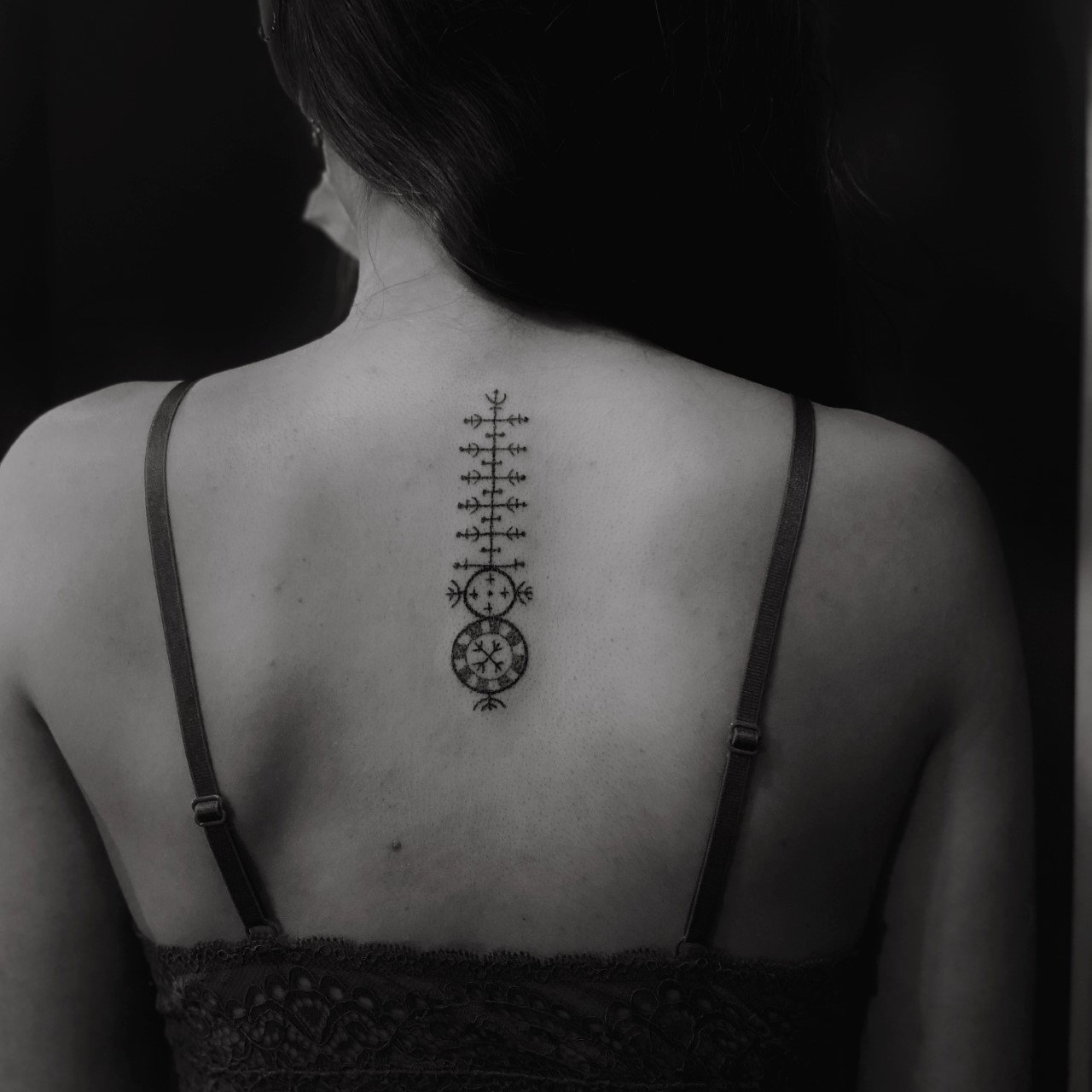
(Private album)
How did you get first get into tattooing?
Since forever I have drawn, I really appreciate all kinds of artistic expression but tattooing became a passion when I moved to Montréal in Canada where I did my first international solo experience for one year.
There are a lot of great tattoo artists in Canada and tattoos are super common there. I promised to myself that one day I will try to tattoo. I came back to France and I was consumed by my daily architect routine. I realised during the first COVID lockdown that I wasn’t 100% happy in my life and I needed to change something. I ordered tattoo material and I tried to use it on myself, then on my friends and on a few clients.
I opened my own private tattoo studio in September 2020 and it was the best decision of my life. Now I can totally express myself through my art and my creativity, I have meet amazing people.
How did you get interested in traditional Croatian-Bosnian tattooing and what did you learn about it?
I am passionate about ethnic tattoos, I am always doing research about tattoo history and origins. One day I accidentally found Croatian-Bosnian tattoo designs and I was super curious. So I explored more about them and I discovered the work of Ćiro Truhelka, a Croatian archeologist, historian and art historian, who did a lot of research about traditional tattoos.
Obviously, when I began to tattoo the idea to integrate my culture in my work was logical and I went deeply into the subject through articles, testimonies … I also found “Croatia Week” website during my research.
I learned that under the Ottoman Empire, between the 15th and 19th century when Bosnia was occupied by the Turks, young Christian women of Croatian origin were tattooed with these symbols in order to be protected from being kidnapped. If they’ve been taken these tattoos allowed them to remember their real Christian faith in case of being converted to islam. The origins of this old tradition could be in the Illyrian and Celtic tribes and their rituals around these areas. The ceremony of tattooing was called « sicanje » or « bocanje ». It was usually done by older women applying a mixture of charcoal or gunpowder, honey and milk (mother’s milk after she had a baby) after the symbol had been tattooed on the body with a needle. We mainly find these tattoos on the hands, fingers, forearm and sometimes the upper arm and chest.
You have a number of the traditional tattoos yourself, what do they represent to you personally?
For me these tattoos are the expression of my culture but also my femininity. With these symbols I am feeling proud of my Croatian part but also protected like a stronger woman. I voluntarily chose to place them on my hand and fingers, as the tradition, because these parts of my body are never covered and they show my identity with these ornaments.
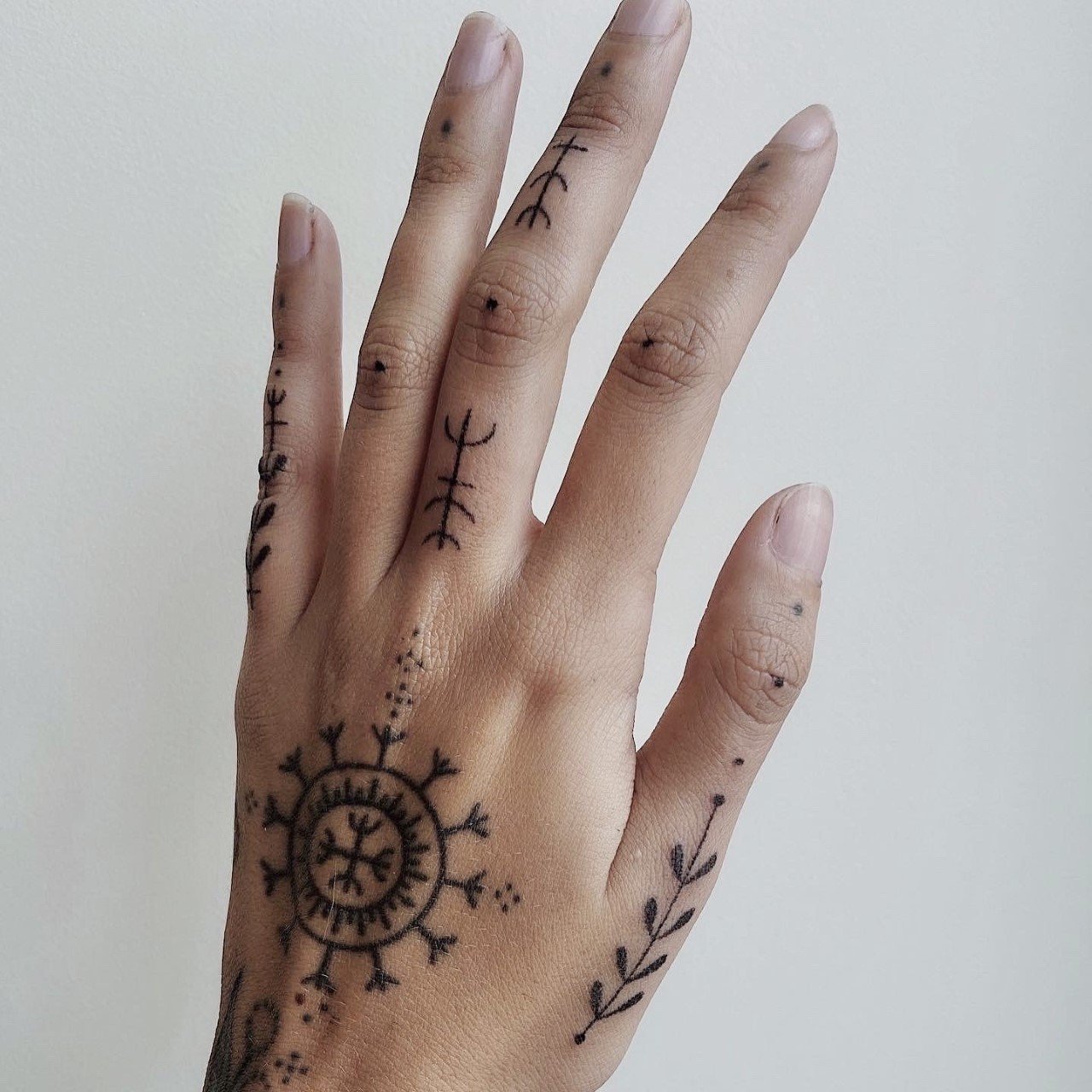
(Private album)
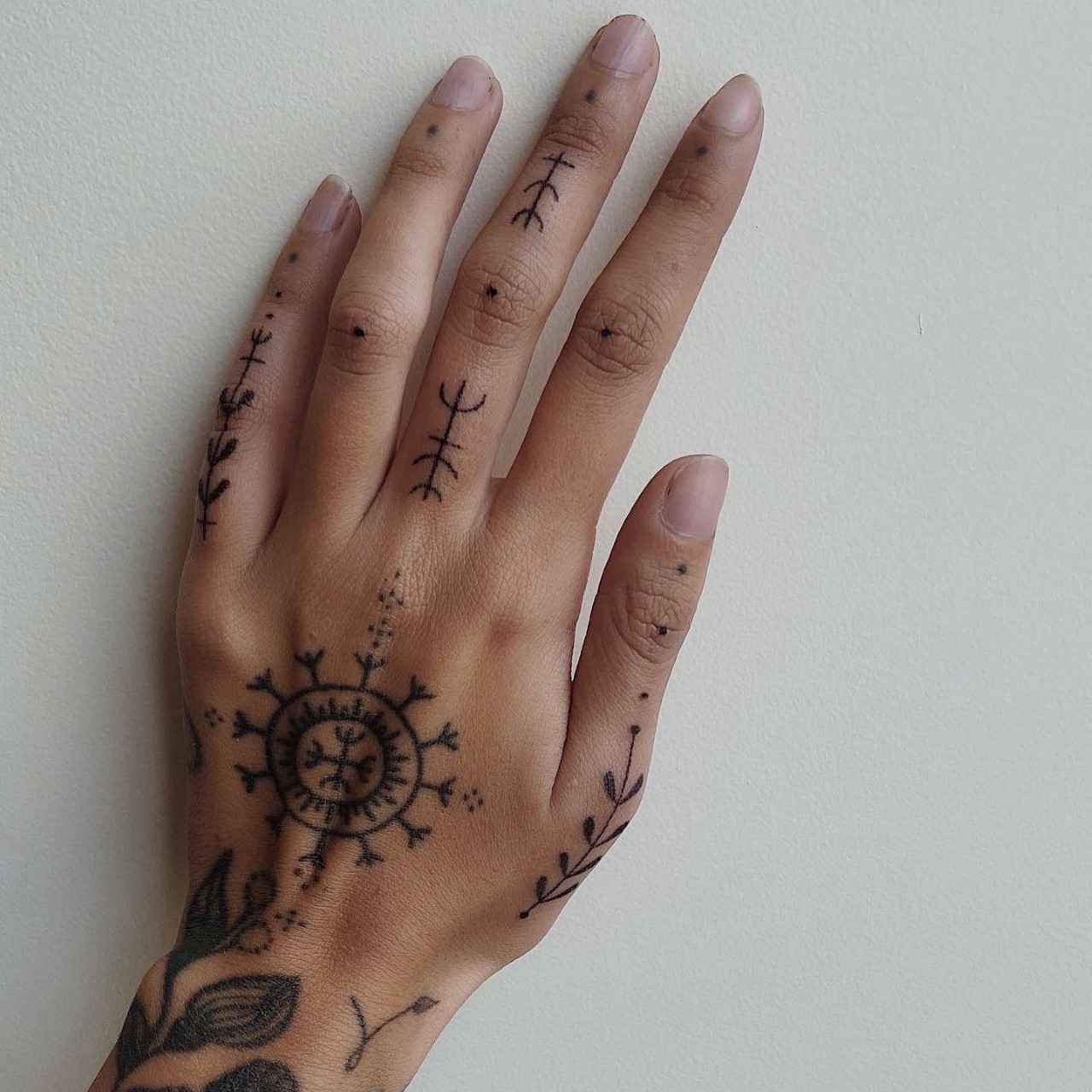
(Private album)
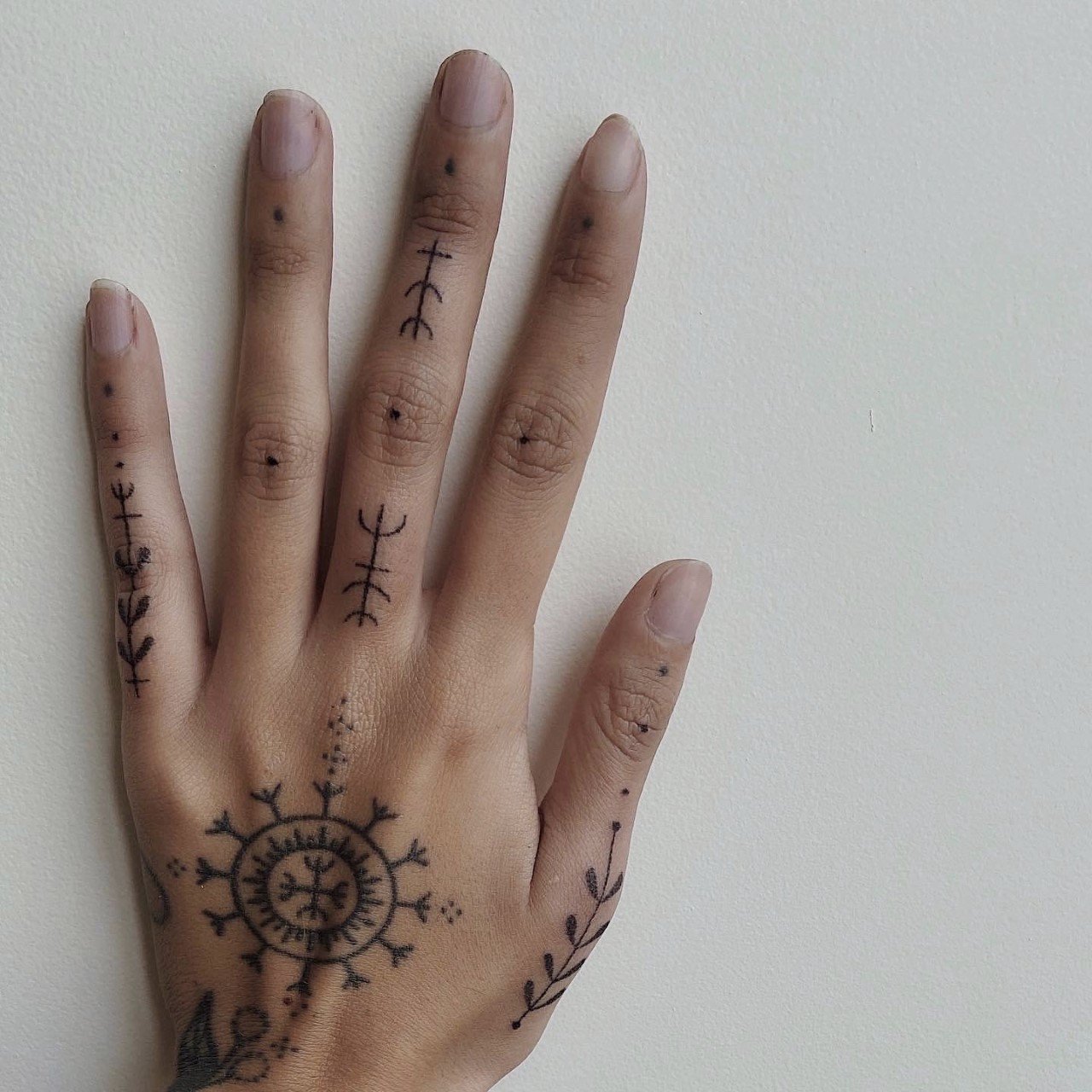
(Private album)
Did you do those yourself?
The circular one (kolo) on my hand was done by another tattooist in Rotterdam by handpoke, I brought him the design and I explained to him the link between this design and my culture (I did it 2 years ago and I didn’t know how to tattoo then). The tattoos on my fingers were done by me and I want to do a big Croatian-Bosnian composition soon on my leg, by myself of course, because my arms are already full.
You have your own studio now?
I have my own private studio in Paris, in the 10th district of the city. This is a secret place I only send the address when someone books an appointment with me. I prefer to keep an intimate environment and not be disturbed during the tattoo session. I designed all the space because of my architect skills and I created a really comfy and warm studio where people can feel confident.
You only work in the old traditional way without a machine. Can you elaborate more about the style and what you like about it.
Yes, I only use single needles without any machine. The handpoke technique is an ancestral technique of tattooing practiced by a minority of tattoo artists. Everything is done manually with a classic tattoo needle dipped in ink where the goal is to make a multitude of small dots which will then form lines or shadows.
The handpoke technic offers a different experience to the clients. It is less painful and less noisy than the machine, this silent technique allows me to be more connected with the client, we can really exchange and discuss. I also believe in art therapy through tattoos and sometimes it’s a good way for some people to take out all their emotions during the session. For me it’s a mix between art and handcraft.
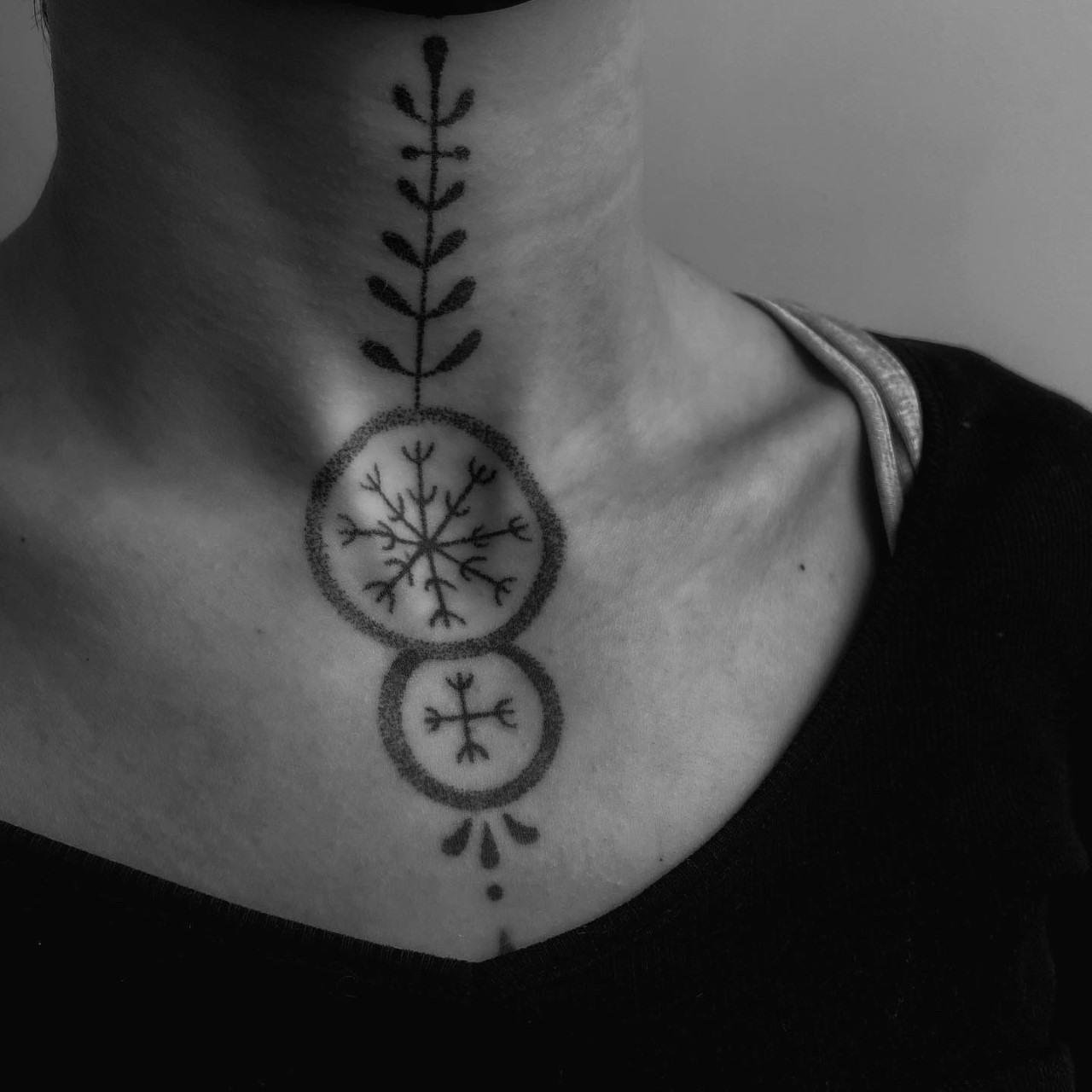
(Private album)
Do you have many requests to do traditional Croatian-Bosnian tattoos on people? Are any symbols more popular than others?
Yes, I have many requests for these traditional tattoos. But each time someone is interested in traditional symbols, the person asks me a lot about the history, we talk about the question of cultural appropriation. I see a lot of tattooists using these symbols without mentioning where they are from.
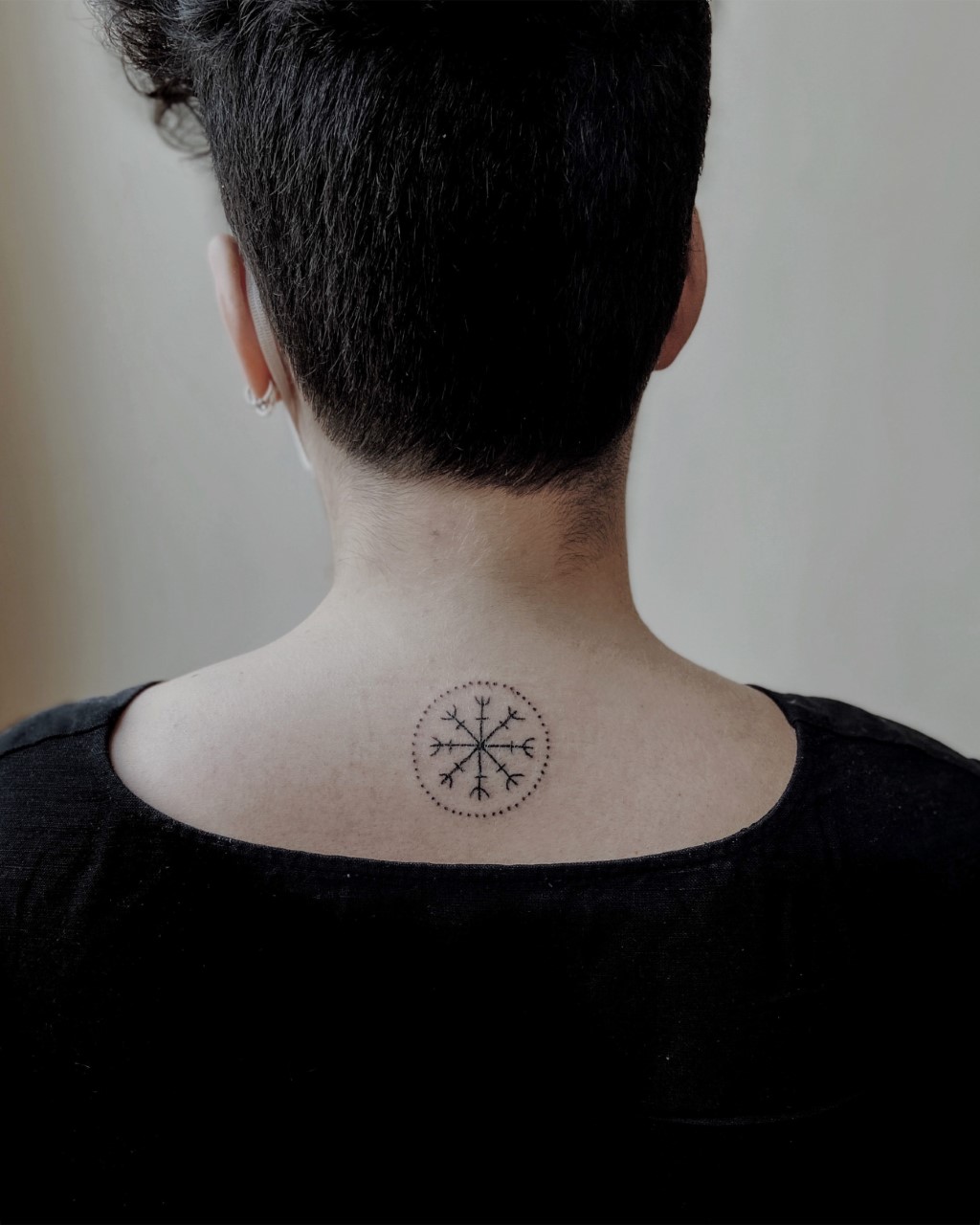
(Private album)
Some of them also wrote that they are their own creation, or they are « berber » symbols. For me it’s totally disrespectful. Each time I post about these symbols, I explain their origins, I also have a special highlight story on instagram where people can read in French and in English the meaning of these symbols. For me it’s super important to share my culture and practice this art with respect and awareness. When I create a special composition inspired by these traditional symbols I always precise it.
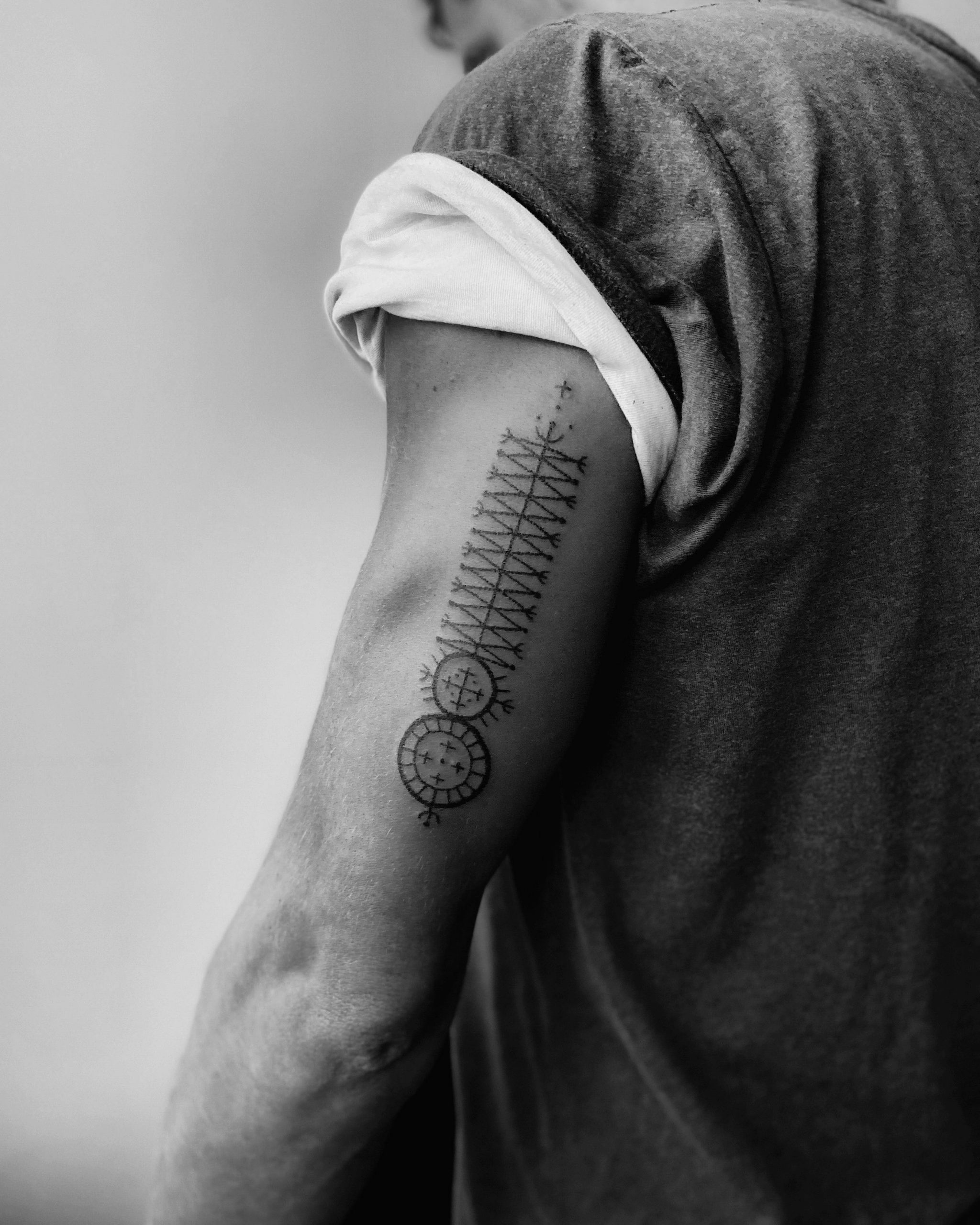
(Private album)
People can be interested in them because they are Croatian, Bosnian, or Christian. Often women want to be inked to be protected as it was done in the past. There is a real contemporary link between the actual women conditions, the feminist question and these tattoos which could be interpreted as an emancipation sign. The tattoos was made by women on women and their purpose was to protect them and give them force. The most popular is the kolo (circle) because it refers to the union, family, community. I was really surprised that French people could be very enthusiastic and curious about this culture. A lot of people wrote to me to thanks me because they learn new things through my content.
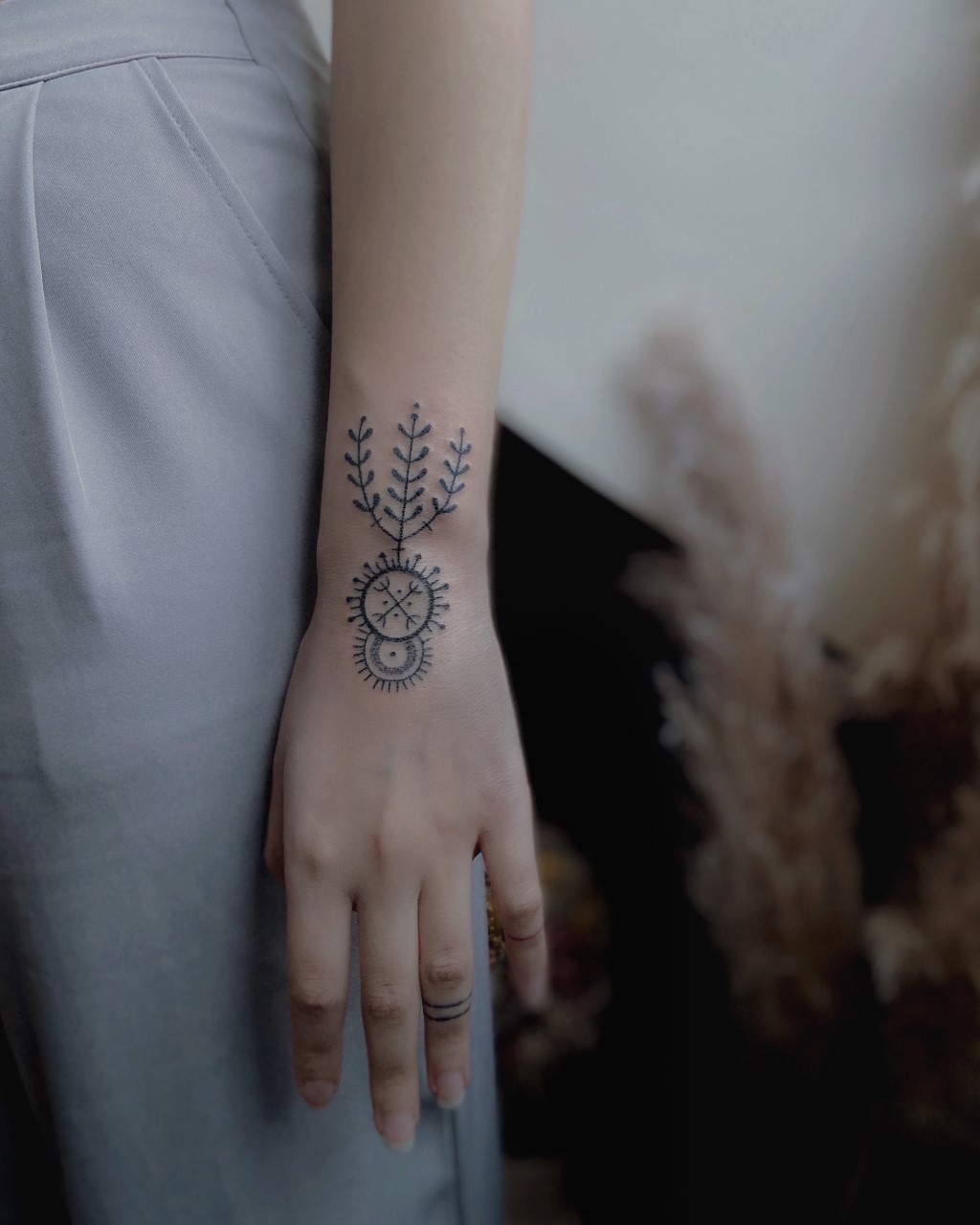
(Private album)
Is there anyway you can help someone recognise a Croatian-Bosnian tattoo?
Most people confuse berber and Croatian-Bosnian tattoos. Berber are composed with geometric lines, diamond shape and crossings.
Croatian-Bosnian tattoos are more circular, we also find the cross symbol and some ornaments referring to ears of wheat and leaf. When you compare berber and balkan tattoos and look closer you can see the difference of geometrics and composition.
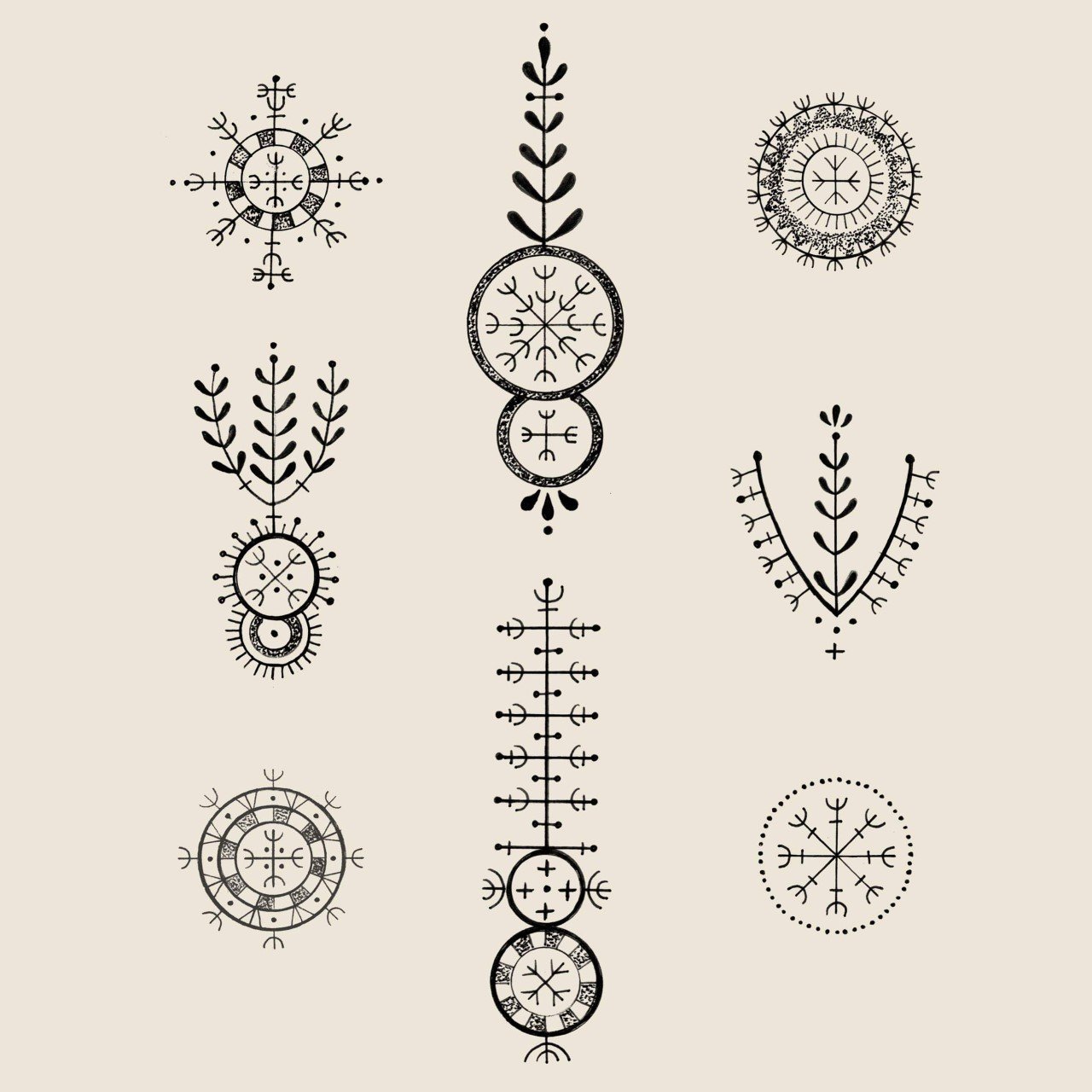
(Private album)
What are your plans for the future?
I’d like to still develop my tattoo technique and still learn more about Croatian-Bosnian tattoos. Of course, guesting as a tattoo artist in a tattoo shop in Croatia and Bosnia is on my to do list for 2021 but with the virus it is quite difficult to plan a trip.
I’d also like to start writing about tattoo and therapy, the psychological aspect of this art is unknown but there is so much to talk about. Especially for women and their body appropriation.
How can people find you and your studio on social media.
You can find my work on instagram on @melpzvc and for the studio @melrose.studio.paris.

